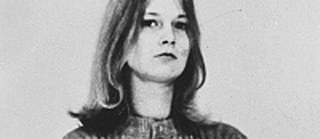Traces of Germany in Lebanon
The Red Army Faction – Encounters with Phantoms

In the late 1960s and the early 1970s, the political mood in Germany was very tense. On 7 November 1968, the final day of the Christian Democratic Party congress, Beate Klarsfeld slapped German Chancellor Kurt Georg Kiesinger in the face with cameras rolling and accused him of being a ‘Nazi’ due to lingering questions regarding his past.
A year prior to this, during a state visit by the Shah of Iran on 2 June 1967, a German police officer had shot the student Benno Ohnesorg dead in the street. And on 11 April 1968, the leader of the German student movement, Rudi Dutschke, was severely injured in an assassination attempt. But the German police remained silent. The left-wing section of the public demanded an investigation, but they were ignored.
The attempted assassination of Rudi Dutschke was also the spark that set off Ingrid Siepmann’s political radicalisation. She was born to a family of pharmacists in Marienberg in 1944 and moved to West-Berlin in 1966. Before that, she studied Greek in Tübingen, had a child, and in 1965 married her boyfriend Eckhard Siepmann, who was the also the father of her son. But she gave up her bourgeois lifestyle following the attempt on Rudi Dutschke’s life. In 1969 she became romantically involved with Dieter Kunzelmann, the co-founder of “Kommune 1”, the first politically motivated German commune. In late 1969, Ingrid Siepmann accompanied Kunzelmann and others to a military training camp in Lebanon run by Al Fatah, which was the most powerful faction within the PLO.
Siepmann travelled between two worlds: Lebanon and Germany. She procured money for the Red Army Faction (RAF) and participated in several bank robberies. Within a span of two years she had become part of the inner circle of the terrorist movement. The authorities put considerable resources into catching the group. This pressure led to an atmosphere of mutual distrust within the ranks. In 1974 Ingrid Siepmann was arrested in Germany and sentenced to 13 years in prison, but just one year later, in 1975, she was free again. The Federal Government released her and other inmates belonging to the “2 June Movement” in exchange for the kidnapped Christian Democrat politician Peter Lorenz. On 3 March 1975 she emigrated to Lebanon by way of South Yemen.
After she arrived in Lebanon she continued to live in the underground and built up contacts to anti-Israel and anti-Zionist groups. Meanwhile, things took a different turn for the RAF in Germany: on 9 May 1976, Ulrike Meinhof hanged herself from her cell window in Stammheim Prison using a towel she had torn into ribbons. Following a failed attempt to secure the freedom of the remaining prisoners during the so-called German Autumn, Andreas Baader, Gudrun Ensslin and Jan-Carl Raspe collectively committed suicide on 18 October 1977 in what became known as the ‘Death Night of Stammheim’.
But Ingrid Siepmann remained active. In 1977 she was said to have been involved with the kidnapping of the Austrian industrialist Michael Palmer. She secured millions of Deutschmarks in ransom money, which was shared between the RAF and the Popular Front for the Liberation of Palestine. After 1977, Ingrid Siepmann’s face was featured on all the posters of the most wanted terrorists issued by the German authorities.
The situation in Germany had become too risky for her to show her face there again. She remained in Lebanon, where, according to German sources, she joined a Palestinian freedom brigade operating in the south of the country in the area around Sidon. She fought for the PLO in the 1982 Lebanon War, a conflict between the Israeli army and militias on the one side and the PLO and Syrian troops on the other. Ingrid Siepmann is believed to have been killed during an Israeli airstrike on 9 or 10 June 1982. Other sources report that she died during the fighting related to the Sabra and Shatila massacre in September 1982. Those are the only known clues regarding her fate.
Another important event connected to Siepmann’s death raises even more questions: shortly before she died, Ingrid Siepmann is reported to have shown up unannounced at the German Embassy in Beirut with a child she claimed to be her own. She sought immediate safe passage out of the country and offered to provide inside knowledge of terrorist groups and the RAF in exchange. However, the German Embassy was hesitant to comply with the terms of her sudden visit. As the diplomats were unable to reach a quick decision, Ingrid Siepmann vanished again as quickly as she had appeared – without leaving a trace.
Years later, Ingrid Siepmann’s name made one final appearance in the annals of German history. On 20 April 1998, the Cologne office of Reuters News Agency received a notice in which the RAF announced its own dissolution: “Almost 28 years ago, on 14 May 1970, the RAF was born from an act of liberation. Today we are ending this project. The urban guerrilla movement in the form of the RAF is now history.” The eight-page document also contained a list with the names of RAF terrorists who had been killed. Ingrid Siepmann was one of the names on that list.